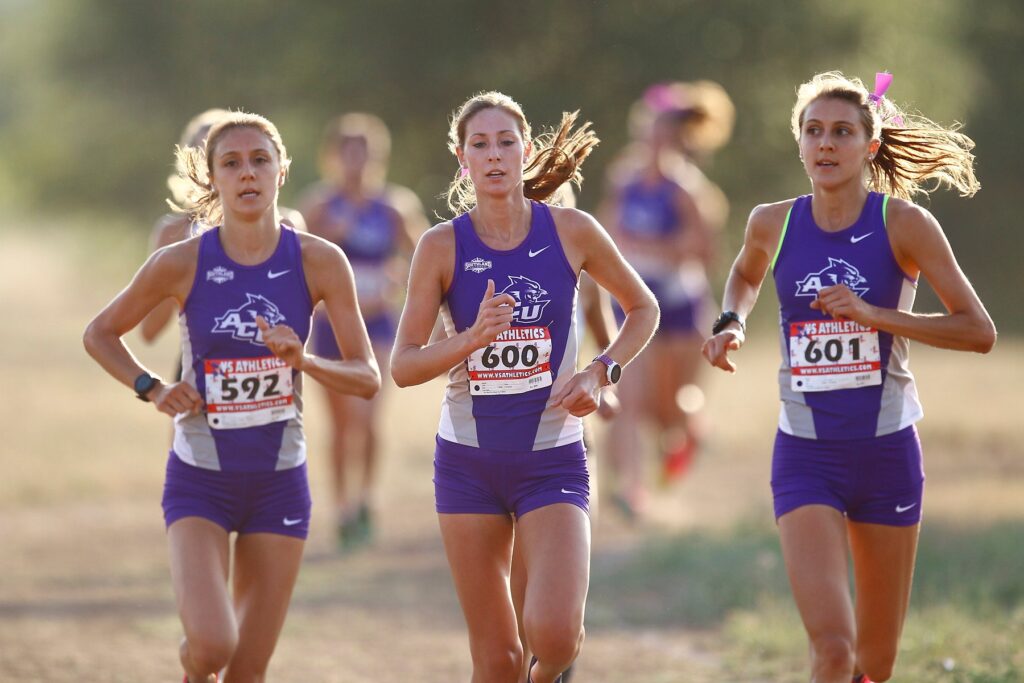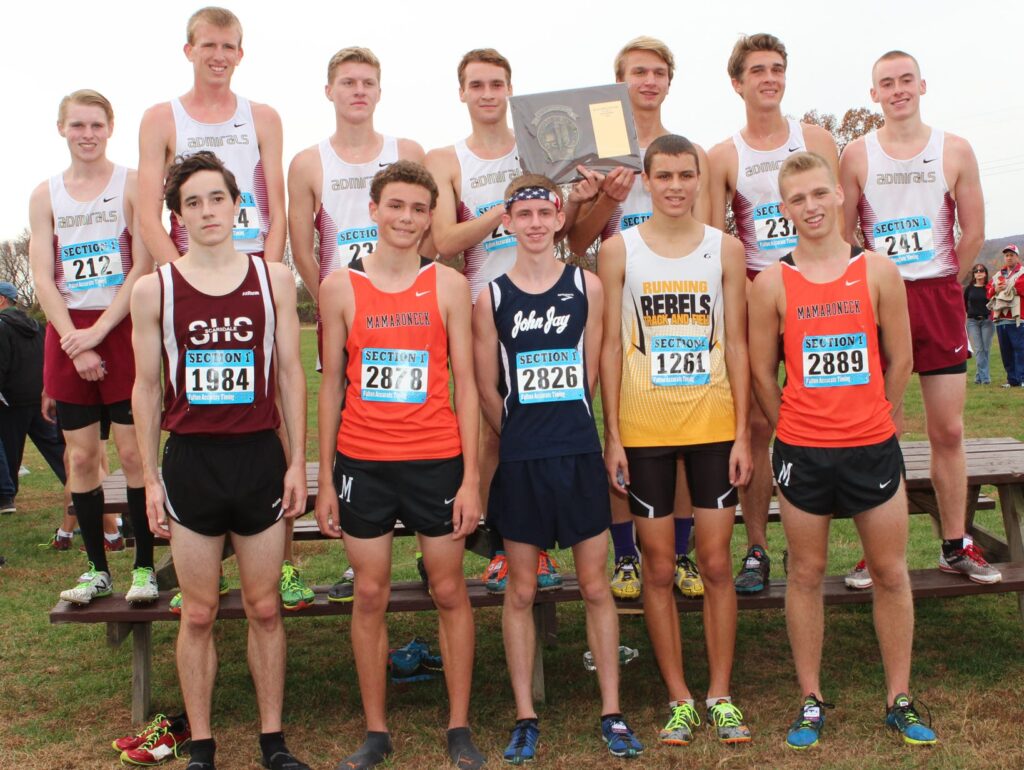

Running cross country requires the perfect blend of endurance, dedication, and mental strength. For many talented and hard-working athletes, pursuing this sport at a collegiate level can lead to a life-changing opportunity in the form of cross country scholarships. These financial rewards not only recognize the athletes’ skills and commitment, but also ease the financial burden of higher education.
We understand that navigating the world of scholarships can be challenging, especially when it comes to athletic programs and determining eligibility. College coaches often look for talent and determination in athletes when searching for individuals deserving of cross country scholarships. It is essential for athletes to maintain great academic records and strong athletic performances to increase their chances of receiving financial aid.
In the United States, cross country scholarships are available across multiple divisions, including NCAA Divisions I, II, and III, NAIA, and junior colleges. Each division and school may have varying scholarship opportunities and limits, making it crucial for athletes to explore their options and carefully plan their athletic careers.
Types of Cross Country Scholarships
In this section, we will provide an overview of various types of cross country scholarships available to talented athletes. We’ll particularly focus on NCAA, NAIA, and NJCAA scholarships.
NCAA Scholarships
In the NCAA, cross country scholarships are classified as equivalency sports. This means that coaches have the flexibility to award partial scholarships, allowing them to attract more athletes to their teams. For Division I and Division II schools, the men’s scholarship limits per track and field team, which includes cross country, are set at 12.6 scholarships. Division I teams have an average of 39 athletes, while Division II teams typically carry around 34 athletes.
NCAA Division I and Division II schools offer athletic scholarships, but it’s important to note that Division III schools do not. However, academic or need-based aid may be accessible to athletes attending Division III institutions.
NAIA Scholarships
Similar to the NCAA, the National Association of Intercollegiate Athletics (NAIA) allows schools to offer cross country scholarships as equivalency sports. NAIA colleges and universities can provide a set number of athletic scholarships based on the institution’s size and funding availability.
It is crucial for athletes to explore the specific scholarship opportunities offered by individual NAIA institutions, as the criteria and amounts may vary widely among schools.
NJCAA Scholarships
The National Junior College Athletic Association (NJCAA) allows two-year colleges to grant cross country scholarships as well. NJCAA schools can provide either full or partial scholarships to talented athletes, depending on the availability of funds and the coaching staff’s discretion.
As with the NCAA and NAIA, it is essential that athletes research the NJCAA scholarship guidelines and requirements to remain eligible while competing at this level.
In conclusion, by understanding and pursuing the various cross country scholarships available through NCAA, NAIA, and NJCAA institutions, athletes have the opportunity to continue their athletic careers and receive financial assistance throughout their college education.
Eligibility and Requirements
Academic Requirements
To be eligible for a cross country scholarship, a student-athlete must meet certain academic requirements. As a high school senior, you should have a minimum grade point average (GPA) of 2.3 for NCAA Division 1 eligibility, according to the information provided by Aspire Atlantic. It’s essential to note that GPA requirements may vary by school and athletic conference.
Additionally, you should be aware of the specific academic requirements for the collegiate division in which you aim to compete, such as NCAA Division 1, 2, or 3. Strive to maintain a strong academic record throughout high school to increase your chances of obtaining a college cross country scholarship.
Athletic Performance
Your athletic performance in cross country competitions greatly impacts your scholarship opportunities. College coaches look for athletes with strong track records, and consistent improvement throughout their high school careers. Here are a few ways to showcase your abilities and stand out to collegiate coaches:
- Compete in regional and national events: These races can help you gain exposure and improve your national ranking.
- Present up-to-date athletic accomplishments: College coaches want to see continuous improvement; provide them with your most recent race times and personal bests.
- Seek guidance from your high school coach: Your coach’s input and recommendations can be invaluable when communicating with prospective college coaches.
Character and Leadership
Aside from academic and athletic achievements, character and leadership play an integral role in your eligibility for cross country scholarships. College coaches often seek athletes who demonstrate great sportsmanship, motivation, and a positive attitude towards their teammates and the sport.
To display your character and leadership qualities, consider the following:
- Get involved in extracurricular activities: Participating in clubs, student government, or community service projects can showcase your commitment to personal growth and teamwork.
- Develop strong relationships with your coaches: A positive connection with your high school coach will not only enhance your athletic performance but also provide opportunities for them to advocate on your behalf when speaking to college coaches.
- Be a leader among your teammates: Encourage and support your teammates not just during competitions but also in the classroom and in other aspects of their lives. This behavior demonstrates your potential to be a valuable asset to a collegiate cross country team.
At the end of the day, meeting and exceeding the various eligibility and requirements in academics, athletic performance, and character and leadership will significantly increase your chances of obtaining a college cross country scholarship.
Application Process
Connecting with College Coaches
As you begin searching for cross country scholarships, one of the most essential steps in the application process is connecting with college coaches. To stand out from the competition, it’s important to effectively communicate your athletic and academic achievements, as well as your dedication to the sport. We recommend reaching out via email, attending college showcases, and utilizing online recruiting platforms to showcase your skills.
Additionally, building a personal relationship with cross country coaches may increase your chances of obtaining a scholarship since they have a limited number of awards to offer.
Gathering Necessary Documents
Another crucial part of the application process is gathering and preparing all necessary documents to support your candidacy for a cross country scholarship. These may include:
- High school transcripts
- Standardized test scores (SAT, ACT)
- Letters of recommendation from teachers and/or coaches
- Personal statement or resume outlining your athletic and academic achievements
- Video footage of your cross country races or training sessions
By compiling these documents in advance, you will be well-prepared when you approach college coaches and start applying for scholarships.
Deadlines and Timelines
It’s imperative to stay organized and be aware of all deadlines and timelines associated with the cross country scholarship application process. College coaches and scholarship committees typically have specific deadlines, so missing a deadline could cost you a valuable opportunity.
To ensure you stay on track, create a timeline for all application-related tasks such as:
- Identifying potential scholarships
- Contacting college coaches
- Preparing application materials
- Submitting applications
- Following up with coaches and scholarship organizations
By setting a timeline, you can ensure that you will be able to manage your time effectively, meet all deadlines, and submit the best possible applications for cross country scholarships.
During the application process, keep in mind that college cross country programs and coaches have varying scholarship limits and standards. For example, NCAA Division I institutions can offer 12.6 scholarships for men’s cross country and 18 scholarships for women’s cross country. Therefore, it’s essential to understand each program’s unique requirements and expectations when applying for cross country scholarships.
Top Cross Country Colleges and Programs
In this section, we will discuss the top cross country colleges and programs in the United States across various college divisions. We have divided the information into the following subsections: NCAA Division I, NCAA Division II, NCAA Division III, NAIA, and Junior Colleges.
NCAA Division I
In the NCAA Division I, there are several prestigious cross country colleges, some of which have claimed NCAA cross country championships in recent years. These colleges include BYU, Northern Arizona, Colorado, New Mexico, Oregon, and Arkansas. In addition to excellent athletic programs, these universities offer diverse academic opportunities, making them ideal destinations for student-athletes who excel in both sports and academics.
NCAA Division II
NCAA Division II also boasts numerous high-quality cross country programs. These colleges and universities provide a balance of athletics and academics, as well as financial aid options such as 12.6 scholarships for men’s and women’s cross country teams. Some notable Division II cross country schools include Adams State University, Grand Valley State University, and Colorado School of Mines.
NCAA Division III
When it comes to NCAA Division III, there is a strong emphasis on academics. With competitive cross country programs that do not offer athletic scholarships, these colleges focus on providing an enriching student experience. Some notable NCAA Division III cross country colleges are North Central College, Williams College, and Johns Hopkins University.
NAIA
In the National Association of Intercollegiate Athletics (NAIA) division, cross country programs are smaller in size, but still offer competitive athletic and academic opportunities. With 5 scholarships available for men’s and women’s cross country teams, NAIA schools such as the University of Saint Mary, College of Idaho, and Taylor University provide student-athletes with a chance to excel in their chosen sports.
Junior Colleges
Junior Colleges, which include both NJCAA and CCCAA institutions, offer a unique opportunity for student-athletes seeking a smaller school environment with the possibility of transferring to a four-year institution in the future. These colleges often have cross country programs that allow athletes to develop their skills while working toward their general education requirements. Some notable junior colleges with well-regarded cross country programs include Iowa Central Community College, Central Arizona College, and Sierra College.
Notable Cross Country Scholarships
As we examine the various scholarship opportunities available for cross country athletes, it’s important to note that there are several categories, including regional scholarships, partial scholarships, and track and field scholarships. In this section, we will discuss these options in more detail.
Regional Scholarships
Across different regions of the United States, universities and organizations offer cross country scholarships to talented athletes. For example, in the South, schools like Virginia provide scholarship opportunities for their student-athletes. Heading West, institutions such as Oregon, Stanford, Colorado, Arizona, and New Mexico offer awards, as well. For athletes in the Midwest, schools like Iowa State present valuable opportunities.
Partial Scholarships
Many universities offer cross country scholarships in the form of partial scholarships. These allow schools to attract multiple talented athletes by distributing awards amongst a larger number of recipients. For example, NCAA Division II schools may provide several athletes with 1/2 scholarships to stay within team limits. This way, they can create a strong, well-rounded team without exceeding their scholarship budget.
Track and Field Scholarships
Finally, track and field scholarships often include cross country athletes as part of their scholarship package. These programs share funds amongst both sports and divide scholarships among the athletes. UCLA is an example of a university that offers such combined scholarships. These awards may take into account factors such as the athlete’s skill level and financial need.
By understanding the different types of cross country scholarships available, student-athletes have a better chance of finding the financial support that suits their needs and abilities. Keep in mind that requirements and availability may vary between regions and institutions.
Regional Breakdown of Colleges
Northeast
In the Northeast region of the United States, we find a number of excellent college cross country programs, both at the NCAA and junior college level. Top-tier schools such as Syracuse, Johns Hopkins, Middlebury, and Williams boast strong cross country teams. These schools are known for their competitive spirit and successful track record in regional and national-level competitions.
South
The South is another region with an abundance of great colleges for cross country athletes. Virginia, in particular, is home to some notable programs such as University of Virginia. The state of Florida also stands out with Florida State University, which offers strong athletic scholarships and opportunities for runners. Furthermore, schools like Georgetown in Washington, DC come with a good tradition of cross country excellence.
Midwest
Our focus now shifts to the Midwest, where multiple colleges have notable cross country programs worth exploring. Many colleges in the region not only offer athletic scholarships but also provide comprehensive academic and athletic support to ensure their athletes’ success both on and off the field. Texas Tech is a prime example of this, offering scholarships at both the NCAA Division I and Division II levels.
West
Lastly, we head to the West region, where states like New Mexico and Washington host some impressive cross country programs. In New Mexico, for instance, the University of New Mexico offers scholarships and opportunities for runners to develop their skills and compete at a high level. In Washington, schools like the University of Washington provide strong support for athletes alongside their top-level education offerings.
In conclusion, the United States boasts a variety of excellent cross country programs across all regions. Prospective student-athletes should carefully consider each region’s unique offerings and opportunities, keeping in mind factors such as location, competition level, and scholarship availability.
Community College Options for Cross Country Runners
As cross country runners, we understand that not all of us may have the means or desire to attend a four-year university right after high school. Community colleges offer a viable alternative, allowing us to continue our athletic pursuits while obtaining an education. In this section, we’ll discuss some of the benefits and opportunities for high school cross country runners considering community college.
Firstly, choosing a community college has its financial advantages. We can save money on tuition and fees compared to a four-year institution, easing the burden of student debt. Moreover, cross country scholarships may be available at community colleges, although they can be less common than at four-year schools. Keep in mind that scholarship availability will vary depending on the college, so it’s important to research thoroughly and reach out to the athletic department for information.
Another reason we might consider community college is the opportunity for personal growth and academic development, especially if we’re unsure of our long-term goals. Community colleges offer various academic and vocational programs, allowing us to explore different fields or strengthen our academic foundation before transitioning to a four-year college or university.
In addition to academic benefits, many community colleges have cross country programs, enabling us to compete at a collegiate level. While the competition may be less intense than at NCAA or NAIA schools, we’ll still have access to coaching, training, and racing opportunities. Furthermore, it’s worth noting that approximately 7.8% of male and 9.2% of female high school cross country runners compete at some college level, so community college competition shouldn’t be undervalued.
Finally, community colleges often have more relaxed admission requirements compared to four-year schools, providing greater accessibility for cross country runners with varying academic backgrounds. As we apply, it’s essential to consider factors such as location, program offerings, and cross country team culture, in addition to tuition costs and scholarship opportunities.
In summary, community colleges present valuable options for high school cross country runners seeking an affordable, flexible, and accessible post-secondary education while continuing to participate in the sport we love.
Tips for Improving Your Chances of Receiving a Scholarship
As an aspiring cross country athlete, it’s essential to understand what steps you can take to improve your chances of receiving a scholarship. In this section, we’ll be discussing three crucial aspects that can help you achieve your goal: maintaining good academics, improving your 5K time, and building strong relationships with coaches.
Maintaining Good Academics
First and foremost, it’s important for us to emphasize the significance of maintaining good grades throughout high school. Scholarship committees and college coaches are not only looking for talented athletes, but also for well-rounded individuals who can handle the challenges of both academics and athletics. To make yourself a more attractive candidate, we recommend:
- Keeping a high GPA and class rank
- Taking challenging courses, such as honors or advanced placement (AP)
- Participating in extracurricular activities, showcasing your leadership skills and commitment
Improving 5K Time
Recruitment and scholarships in cross country are greatly impacted by your performance, particularly your 5K time. Following a dedicated training plan and setting realistic goals to improve your 5K time will make you stand out among other candidates. Here are some tips to help you improve:
- Develop a consistent training schedule
- Integrate interval workouts for speed development
- Incorporate strength training and flexibility exercises for injury prevention
- Participate in local races to gain experience and track your progress
Building Strong Relationships with Coaches
Lastly, cultivating strong relationships with high school and college coaches plays a vital role in increasing your chances of receiving a scholarship. Coaches can advocate for you and provide valuable insights on the application process. Here are a few strategies for establishing these essential relationships:
- Reach out to coaches early on in your high school career
- Express interest in their program and stay up-to-date with their team’s achievements
- Attend St. Lawrence or other college-level cross country meets to introduce yourself to coaches in person
- Keep coaches updated on your running progress and noteworthy accomplishments
Focusing on these three aspects will help enhance your scholarship prospects in the competitive field of cross country. Remember to stay dedicated and work hard to achieve your goals. Good luck!
Frequently Asked Questions
What are recruiting standards?
Recruiting standards vary by college and division level. Coaches evaluate athletes based on their personal best times, distances, and overall performances. Our goal is to help you understand the general standards for different levels of competition. Here is a guide that provides guidelines of times and distances to help you evaluate your own achievements.
What times are needed for college?
The times needed for college cross country depend on the division and program you are targeting. To give you a clearer idea, this link shows the percentage of high school cross country runners competing at different college levels. Always remember that college coaches look for potential, so it’s essential to demonstrate your commitment and improvement throughout your high school career.
What’s the women’s college distance?
The standard women’s college cross country distance is 6 kilometers (approximately 3.73 miles). This distance is consistent across NCAA divisions (D1, D2, and D3) and NAIA competitions.
What are D1 times for females?
Times for female runners at the NCAA D1 level vary depending on the program and competition. Generally, top female runners at this level may complete a 6K in around 20-23 minutes. Since each program has its own standards, it’s important to research the specific schools you are interested in and compare your times to their current athletes.
What are D3 times?
Division III times also depend on the specific program and competition. However, D3 athletes’ times may be less competitive than those of D1 and D2. For instance, a competitive female D3 cross country runner might finish a 6K in around 22-27 minutes. Identifying the right D3 program for you will involve researching schools and comparing your personal bests with their athletes.
How to get a scholarship?
Cross country and track & field are equivalency sports at the NCAA D1 and D2 levels, meaning coaches have a set number of scholarships to distribute among their athletes. To get a scholarship, you need to demonstrate your athletic ability, commitment, and potential for improvement by continuously improving your personal bests and staying involved in the sport throughout your high school years. Research the schools you’re interested in, determine which level of competition suits you best, and reach out to coaches to showcase your achievements and express your interest in their program.




2 thoughts on “Cross Country Scholarship: Essential Guide for Aspiring Athletes”